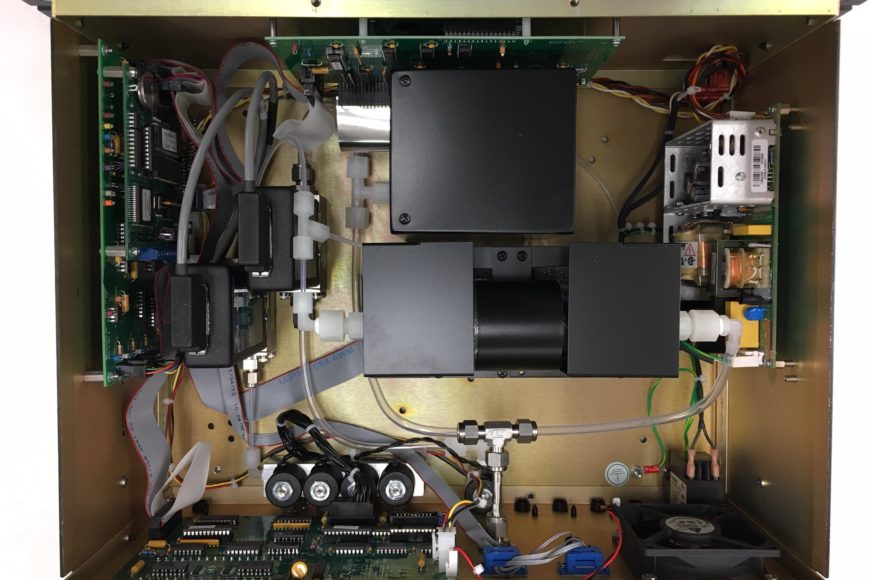
Ambient air monitoring is an increasingly critical initiative in an array of application areas. It helps environmental agencies to determine the concentration of pollutants in urban areas, for example. The goals of ambient monitoring are varied, though they are typically aligned towards identifying potential threats to population health or to natural ecosystems–threats in the form of poor or deteriorating air quality. Ground-level ozone is one such threat, especially in the context of urban air quality. Ozone (O3) is a primary constituent of smog, and it has been identified as one of the six “criteria air pollutants” under the Clean Air Act. Fortunately, both passive and continuous air quality analyzers can precisely monitor ozone concentrations in ambient air.
Naturally, though, ambient air monitors must be calibrated to ensure the veracity of results and to ultimately provide the most accurate public health data possible. Whenever a gas analyzer is used to monitor a specific gas, a corresponding standard must be used. Ozone transfer standards play this role inEnv O3 detection in ambient air monitoring. This post will explore the basic principles of ozone transfer standards in more depth.
What are Ozone Standards?
Ozone standards are ozone concentrations used to calibrate ozone analyzers and are divided into two simple groups called primary standards and transfer standards. Any standards used must meet the National Primary and Secondary Ambient Air Quality Standards (Part 50) as set out by the Clear Air Act.
Primary Standards
Primary standards are used to measure the accuracy of ozone transfer standards and analyzers. A photometer is the instrument used as the primary standard because it can obtain outstanding levels of accuracy when measuring ozone concentrations. Additionally, primary standards are of a higher quality than transfer standards, which is why they are used to support calibration and measuring applications.
Transfer Standards
A transfer standard is designed to create pollutant concentration standards, assays, or pollutant concentrations1. Transfer standards are used to calibrate field analyzers and to check calibration processes. Instruments used as transfer standards allow the primary standards to be used in a specific, fixed location, reducing the risk of contamination or damage. Transfer standards are tested against primary standards, which are far more accurate, to ensure they are accurate and reliable.
How are Ozone Transfer Standards Used?
Transfer standards are used to calibrate ozone monitors both in the field and once they are returned to the laboratory. Although the process sounds simple, ozone transfer standards are complex. They must be referenced against a standard with higher levels of authority and traceability2 to ensure that they have the required reliability and repeatability for the applications they are used in.
Environics and Ozone Transfer Standards
Environics develops world-leading instruments for gas applications such as calibration, dilution, and mixing. Our gas mixing systems automatically blend gases for academic or industrial applications, such as generating precise gas calibration standards and creating gaseous atmospheres.
We have manufactured a system for ozone monitoring and reporting applications. The Environics® Series 6123 Ozone Transfer Standard with Photometer was designed to carry out zero, multi-point, precision, and span calibrations using O3, which can be done automatically. The Series 6123 is designed with ease in mind. It comprises simple, user-friendly software with hardware including a single chassis, ozone generator module, photometer, and inline static mixer.
Key features and benefits include:
- Calibrated to a NIST (National Institute of Standards and Technology) traceable primary standard
- Internally-stored mass flow controller calibration data to increase accuracy and simplify field recalibration.
- Internally-stored ozone generator calibration data provides reliable and repeatable ozone generation.
- Leak testing is available, and pressure decay is used to determine whether there are any internal leaks.
- Photometer that measures how much ozone is generated and uses closed-loop PID control to correct errors
Contact us today for more information on how your ozone (O3) monitoring can be improved with Environics.

